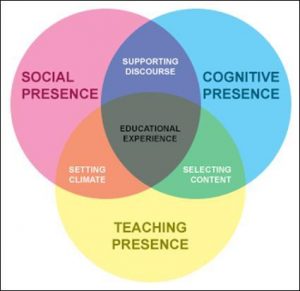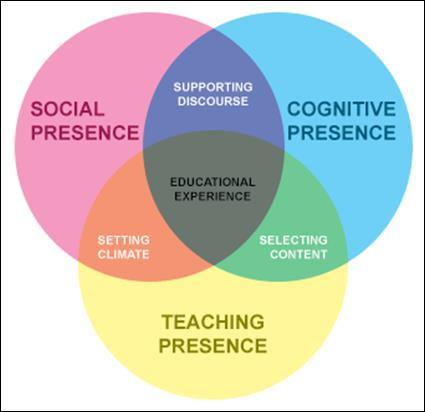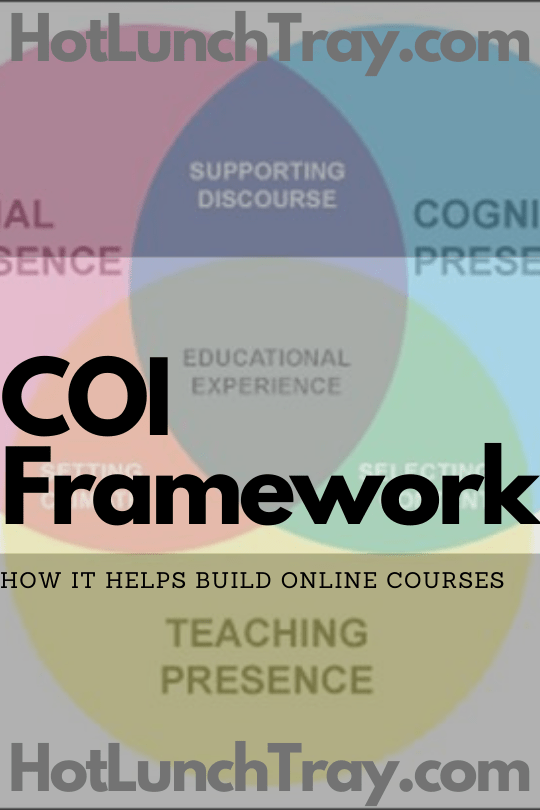The basis for building K-12 online courses is the Community of Inquiry (COI) theoretical framework.
Community of Inquiry
The Community of Inquiry theoretical framework represents a process of creating a deep and meaningful (collaborative-constructivist) learning experience through the development of three interdependent elements – social, cognitive, and teaching presence.
Social Presence
Social presence is “the ability of participants to identify with the community (e.g., course of study), communicate purposefully in a trusting environment, and develop inter-personal relationships by way of projecting their individual personalities” (Garrison, 2009).
Teaching Presence
Teaching Presence is the design, facilitation, and direction of cognitive and social processes for the purpose of realizing personally meaningful and educationally worthwhile learning outcomes (Anderson, et al., 2001).
Cognitive Presence
Cognitive Presence is the extent to which learners are able to construct and confirm meaning through sustained reflection and discourse (Garrison, et al., 2001).

Different frameworks rely on the COI framework to structure our approach to constructing a positive educational experience for teachers and learners.
References
Anderson, T., Rourke, L., Garrison, D. R., & Archer, W. (2001). Assessing teaching presence in a computer conferencing environment. Journal of Asynchronous Learning Networks, 5(2).
Borup, J. (2014, June 20). Community of Inquiry. YouTube. Retrieved October 24, 2021, from https://www.youtube.com/watch?v=273WuFa6Z04&t=176s.
Garrison, D. R., Anderson, T., Archer, W. (2001). Critical thinking, cognitive presence, and computer conferencing in distance education. American Journal of Distance Education, 15(1).
Sanders, K., & Lokey-Vega, A. (2020). K-12 Community of Inquiry: A Case Study of the Applicability of the Community of Inquiry Framework in the K-12 Online Learning Environment. Journal of Online Learning Research, 6(1), 35–56.







1 Pingback